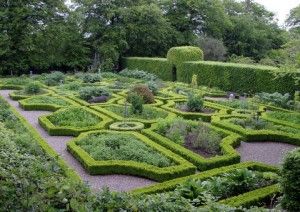Formal Herb Garden Layout

Formal design herb garden.
Formal herb garden layout. If an herb is a plant with a use as a seasoning fragrance dye fiber or medicine then an herb garden is a garden of useful plants. At this point in the construction we were going over lists of vegetables and herbs. A typical garden of the time consisted of well ordered squares or rows of plants. Formal herb gardens are also popular.
A short history of herb garden design by deirdre larkin september 1 2004 whatever their design or intent herb gardens are defined not by their organization but by the plants grown in them. A casual bed devoted to all herbs can look delightfully cottage gardeny or it can look like a jumble. Plants with no practical use found their way. Formal needn t be on a grand scale.
This symmetrical type of herb garden uses plants to create geometric designs and textures such as a circle or square. If you prefer informal herb gardens take note. All of these stages will appear at some point during the growing season. The four center boxes were l shaped.
Raised beds especially lend themselves to this type of setup helping create a sense of ordered calm. Formal herb gardens with their symmetry knots and interweaving textures can look intimidating. Aug 23 2020 explore becky gates s board herb garden layout followed by 120 people on pinterest. Formal gardens of useful plants served medicinal or culinary purposes.
Planting one type of herb per bed emphasizes the order while making maintenance far simpler. Formal herb gardens use straight lines and patterns for pleasing symmetry. Formal herb gardens look gorgeous at least during their peak season of may through june. Planting a formal herb garden.
The structure of the garden helps to cover the straggly appearance of overgrown recently sheared or bolting herbs. Herbs are typically arranged by height color and use with walkways or paths separating beds that are of equal size. A three tiered theatre for the center will hold pots of herbs and culinary flowers. By this i mean a garden with a formal layout and structure.
By the 20th century standards for herb gardens had loosened. The tradition of herb gardening traces back at least to 9th century europe.


















